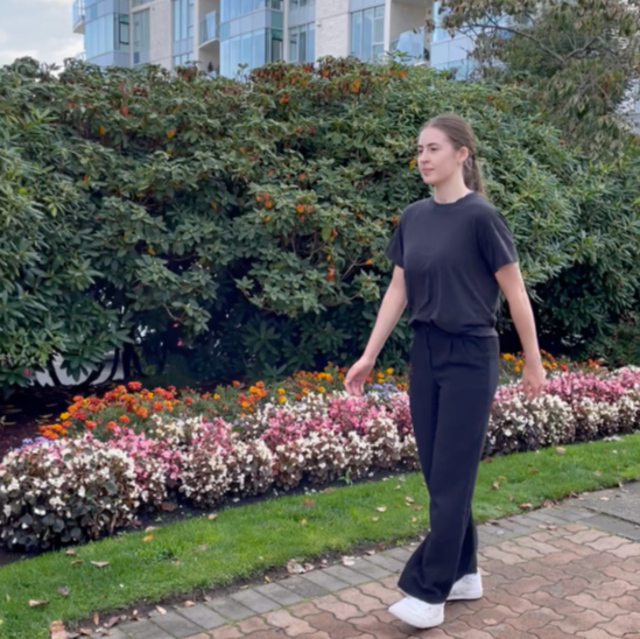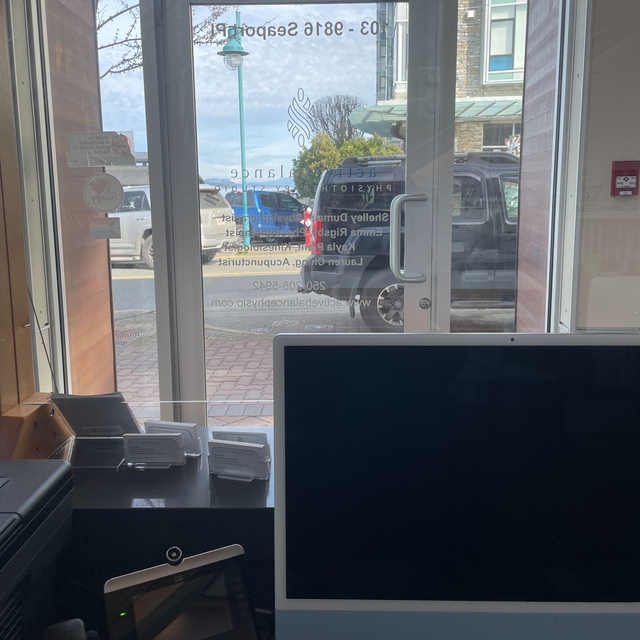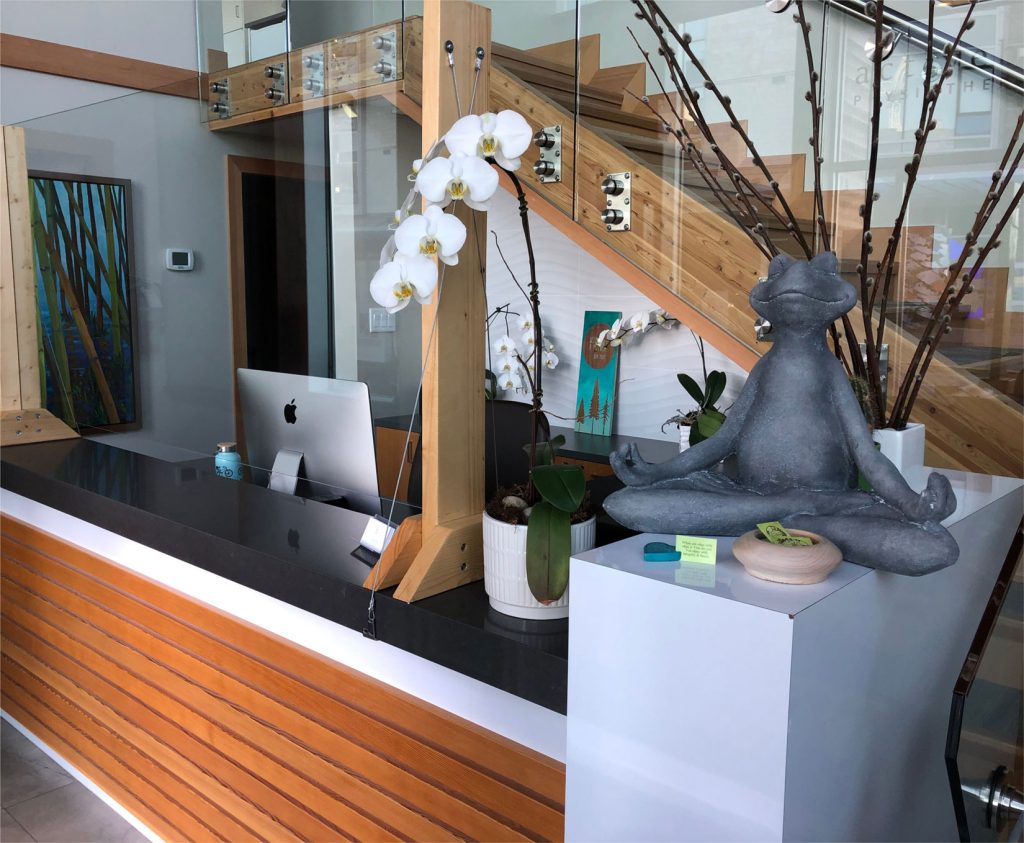Ergonomic Assessment
How to set up your computer space or work space so that it works for your body.
How this helps you?
Whether you are working at home, spending hours in an office, or just using your computer for games and emails, we can help!
What is included?
- In-office assessment at your workplace
- Discussion of your areas of concern with respect to pain and mobility
- Chair fitting with your present office chair
- Simple onsite modifications to office space and suggestions for improvements
- Stretches and movement advice
- Report on the ergonomic assessment
How can an Ergonomic Assessment benefit your company?
- Early intervention and treatment of occupational injuries
- Decrease time away from work due to prolonged occupational injuries
- Facilitate and continuance of a workplace culture that values and supports health as well as injury prevention
- Optimize employee health
- Workplace longevity for staff
Want some tips to keep you pain free at your desk?

Movement Breaks
Our bodies do not respond well to being stationary for long periods of time. Effects of prolonged sitting time can cause increased blood pressure, fatigue, musculoskeletal injuries and insulin levels. Luckily it does not take high intensity exercise or long breaks to decrease these results. Taking a 30 second break every 15 min or a 5 min break every hour can help decrease risk of injury, disease and increase energy and productivity.

Stretching
When we are sitting at a desk we can get imbalances in our muscles. Certain muscles are shortened for prolonged periods of time or are under strain. Taking a quick break throughout your day to stretch these muscles out can help improve posture, muscular endurance and decrease risk of injury. Stretches for our neck, shoulders, wrists, hips and back can all be beneficial.

20-20-20 Rule
Our eyes can get fatigued from looking at a screen for long periods of time. This can lead to strain and headaches. In order to reduce this you can follow the 20, 20, 20 rule. Every 20 min look approximately 20 feet or more away from your screen for 20 seconds. This break allows the muscles in your eyes to focus at a different distance.







